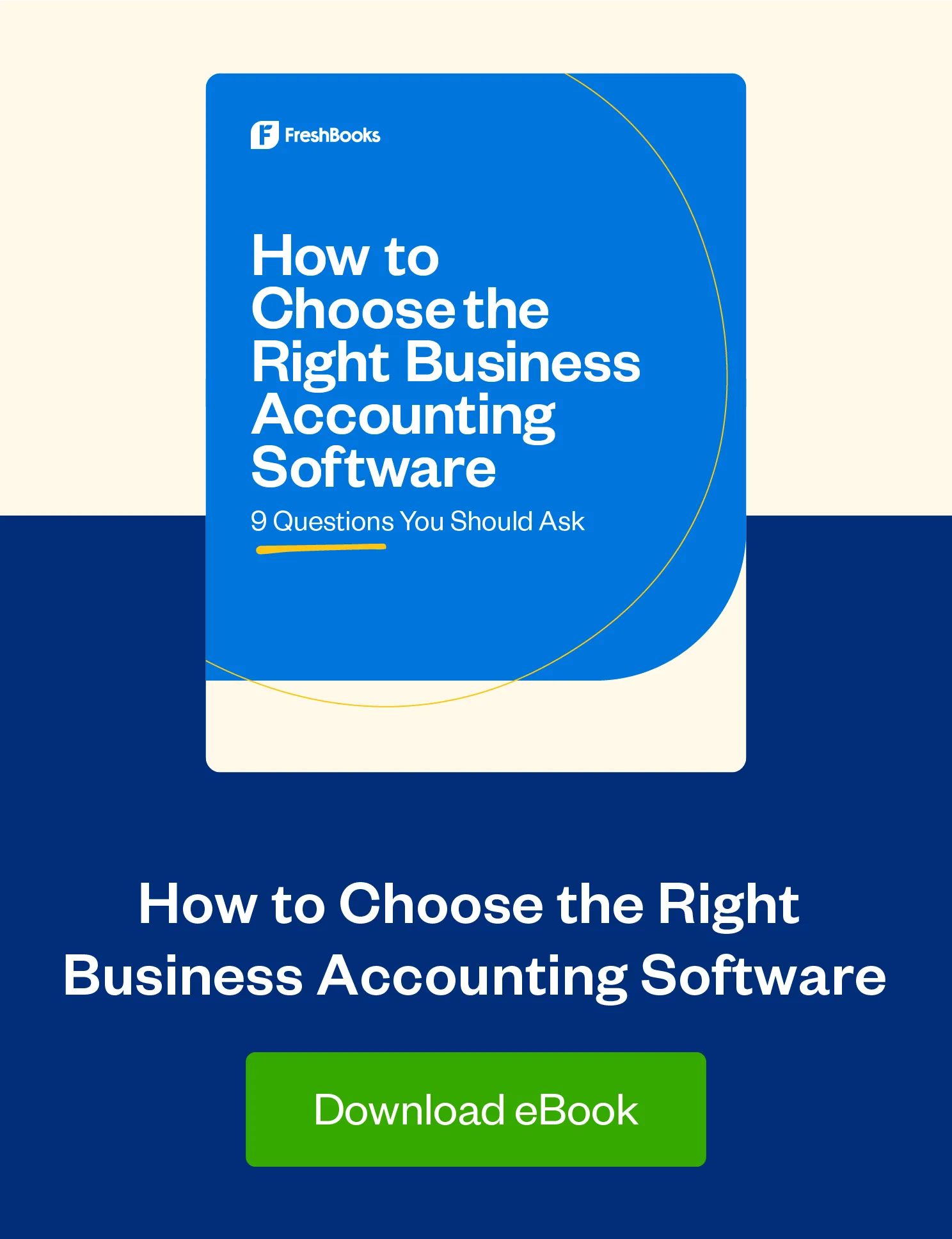Are you a service-based sole proprietor or non-incorporated business owner who earns business income? Then you'll need to know Form T2125.

Whether you’ve been in business for 6 months or 25 years, there’s 1 tax form that the Canada Revenue Agency (CRA) is expecting from you this year, and every year you’re in business: Form T2125, Statement of Business or Professional Activities, which you can find here.
All service-based sole proprietors, non-incorporated business owners, and even limited liability or general partnerships (with fewer than 5 members) use this document to report their business and professional income and expenses. Basically, anyone who needs to report self-employment income and expenses will use the T2125 form.
The T2125 form is part of the T1 income tax package that all individuals use to file their personal income tax returns in Canada.
If you’re concerned about how to fill out the T2125 form properly, you’re not alone. Many business owners with tax anxiety are. Not to worry—below, you’ll find all the answers to your burning questions about this common tax form. We’ve even provided a primer on how to fill one out at the end.
Table of Contents
Do I Have to Fill Out a T2125?
If you’re a sole proprietor (unincorporated business owner), or part of a partnership with fewer than 5 members, you must report your personal income via the T2125 form.
If you have any business and professional income at all—even if it’s an unregistered side hustle for fun—you still have to fill out Form T2125 when you complete your T1 Canadian tax return. Just remember, if CRA considers your side hustle a hobby, the number of expenses you can claim is limited to your total income from your side hustle. In other words, you can’t create a business loss that you use to reduce your other sources of income.
However, there are some exceptions on how to report your income depending on your business structure or industry. Instead, file using the following forms:
- T5013 if you are in a partnership with more than 5 members
- T2121 if you earned your business income through fishing
- T2042 if you earned your business income through farming
What’s the Difference Between Professional Income and Business Income?
Business income is generally any revenue earned by selling products or services. The exception is when you earn income and are in a profession that has a governing body. Like CPAs, lawyers, engineers, doctors and other healthcare professionals. Professional sole proprietors or partnerships with less than 5 members will report their revenue in the professional income section of the T2125. Everyone else will report their revenue in the business income section of the T2125.
What Form Do I Use for Business Taxes?
You guessed it: The T2125 form. If you are self-employed and earn an income from running a business, you report your income and expenses on this tax document. It’s a standard part of the T1 tax package for all Canadians.
And if you have more than one business with differing business activities, you’ll need to fill out a separate form T2125 for each one.
I’m Self-Employed and Received a T4A. How Do I Report This Income?
If you’re self-employed, a business client may provide a T4A form that reports the income they paid you in the previous year. You will need to include the income on your T2125. If you are using tax preparation software, enter the information in the T4A section, and indicate that you would like to include the income on your T2125. When you report the rest of your revenue, make sure to deduct the revenue that was included on your T4A so you don’t double report your income.
It’s important not to rely on your clients to keep a record of what they’ve paid you. Some clients will not send you a T4A, mainly if they are a consumer and not a business. It’s your responsibility to keep accurate records of things like gross and net income for your business in the previous year and enter it on Form T2125.
I Work Under Contract for a Client. Am I an Employee or Considered a Sole Proprietorship?
This is a tricky question. How the CRA classifies you depends on how, where, and when you work.
You Are Considered an Employee If…
Your employer sets the hours you work, controls the pace of your work, sets your salary, supervises you, and assesses the quality of your work. In this case, the work you do under this contract would be considered employment. It would be best to get a T4 for this job and not include any of this income on a T2125. If you feel you are an employee based on these criteria but do not get CPP, EI or tax deducted from the contract payments you receive, talk to your client about setting up your contract correctly.
You Are Considered a Sole Proprietorship If…
You decide and control where you work, how long/often you work, and how you conduct your duties. You supply your own equipment and tools, you incur business costs and advertising costs and manage the cost of renting or purchasing.
As part of this contract work, you could make a profit or incur a loss and are expected to cover your own general operating expenses and operating costs. You also incorporate the duties of this work into your other business or professional activities. If this sounds like your contract terms, you are most definitely a sole proprietor and will need to report income from it on a T2125.
Do I Need to Fill Out Form T2125 for Income Earned Outside of Canada?
Yes. If you have American or other international clients, you may be required to fill out tax documents like Form W-8BEN, which ensures you aren’t taxed in the U.S. as well as Canada.
When reporting your business’ gross and net income to the CRA here at home, you still need to include anything you earned through services or sales from international clients on Form T2125.
Got paid in bitcoin instead? Cryptocurrency counts, too, and you’ve got to report that business income on Form T2125. You may also have capital gains or losses to report if you sold any of your bitcoin during the year.
What If I Bartered Some of My Services? Do I Need to Include That Income on Form T2125?
Yes. It’s not unusual for some professionals to provide their services in exchange for products or services from their clients. Think of an IT specialist who manages the website of a fitness studio in exchange for a monthly membership or a plumber who gets a manicure/pedicure for taking care of the leak in a spa’s bathroom. These are called barter payments.
Even though no money exchanged hands, you still have to report the value of the services you provided as income. For example, if the cost of managing the fitness studio’s website is $1,000/year, that’s what you would include as income on Form T2125.
Do I Include My Business Expenses on Form T2125?
Yes. The purpose of the form is to help you calculate your net business income (i.e., what’s left after you’ve subtracted your business expenses from the money you’ve earned).
Form T2125 will prompt you to enter your self-employment income and expenses. Be prepared with information about both.
How Do I Fill Out Form T2125?
Form T2125 is a 7-page document broken up into 9 sections that can be found on the CRA’s website or provided by any tax professional. Tax filing software will also have the form and guide you through filling it out.
Below is a step-by-step explanation of each section. Note that not all sections will apply to every sole proprietor, so you may leave some blank.
PART 1: Identification
Here’s where you enter your basic information, including:
- Name
- Social Insurance Number (SIN)
- Business name, address, and business number (which is often the same as your GST/HST number)
- Identifying information about your business, such as your main product or service (e.g., graphic design, plumbing, etc.) and industry code
PART 2: Internet Business Activities
You only need to fill out this section if you have a website that generates income. You’ll simply enter the relevant URL(s) and the percentage of gross income generated from the web pages and websites.
PART 3: Income Types and Cost of Goods Sold
This is the section where you declare income. It’s split into 4 parts:
- 3A, Business Income: Fill in this part only if you have business (not professional) income. You’ll also enter how much GST/HST you collected.
- 3B, Professional Income: Fill in this part only if you have professional income. If you just have business income, leave this part blank and fill in 3A. You’ll also enter how much GST/HST you collected.
- 3C, Gross Business or Professional Income: Use the adjusted gross totals you calculated in 3A or 3B, plus include any reserves deducted in the previous year and any other income.
- 3D, Cost of Goods Sold and Gross Profit: Here’s where you enter your business income and subtract expenses like inventory, wages, subcontracts, and other costs directly related to selling your goods or services (a.k.a. costs of goods sold).
PART 4: Net Income (Loss) Before Adjustments
This is where you report all of the expenses you incurred while running your business in the previous year by category. One important section is the capital cost allowance, which includes buildings, furniture, and equipment you use in your business or professional activities that depreciate over time. Form T2125 will help you keep track of your capital cost allowance year over year.
PART 5: Your Net Income (Loss)
Use this section to calculate your final net income or loss for the year, including business-use-of-home expenses. There’s also a section about business partnership income, which you don’t need to answer if you’re a sole proprietor.
PART 6: Other Amounts Deductible From Your Share of the Net Partnership Income (Loss)
Do you have other business expenses that didn’t fit into the categories of Part 4 or Part 5? Here’s where you claim expenses that don’t suit those categories.
PART 7: Calculating Business-Use-Of-Home Expenses
Use this section to enter and calculate how much of your home expenses your business uses, such as heat, electricity, insurance, maintenance costs, etc. These can be deducted from your business income.
PART 8: Details of Other Partners
If you’re in a business partnership, this is where you enter personal and contact information for your other partners. If you’re a sole proprietor, you can leave this section blank.
PART 9: Details of Equity
This is where you report any debts your business owed at the end of the tax year and any personal contributions or withdrawals you made to or from the business, including purchasing your own equipment, building, and motor vehicle expenses.
How Do I File Form T2125?
The best way to be prepared for filing this form and any tax document is to have your financial records organized and in front of you. Accounting software like FreshBooks typically has reports that allow you to get your hands on the correct numbers for the right sections quickly and easily. You can then file the form with your T1 income tax package online using tax filing software and the CRA’s EFILE service.
If you’re not sure which self-employment expenses or business costs do and don’t qualify for inclusion on Form T2125 (i.e. motor vehicle expenses or car insurance) or you want to be sure you’re maximizing the amounts you claim for business-use-of-vehicle, business-use-of-home, and your capital cost allowance, it’s worth talking to a tax professional for advice. They can fill out Form T2125 on your behalf and file it too.
Last but not least: Don’t forget to check the deadlines for the tax season you’re filing to get your tax return in on time. The deadline for self-employed individuals and their spouse is typically June 15th of each year. If you owe tax though, the tax is due on April 30th. If either of those dates falls on the weekend, you get until the following Monday to file.
Even though the process of filing can be intimidating, and it can be appealing to put off working on your taxes, make sure to file on time to avoid paying penalties.
This post was updated in November 2023.

Written by Heather Hudson, Freelance Contributor
Posted on April 12, 2021
This article was verified by Kristen Slavin, CPA

 Canada Tax 101: What Is a W-8BEN Form?
Canada Tax 101: What Is a W-8BEN Form? This Tax Season Find Your Strength in Numbers With FreshBooks
This Tax Season Find Your Strength in Numbers With FreshBooks Everything You Need Know About How to Lower Self-Employed Taxes
Everything You Need Know About How to Lower Self-Employed Taxes





